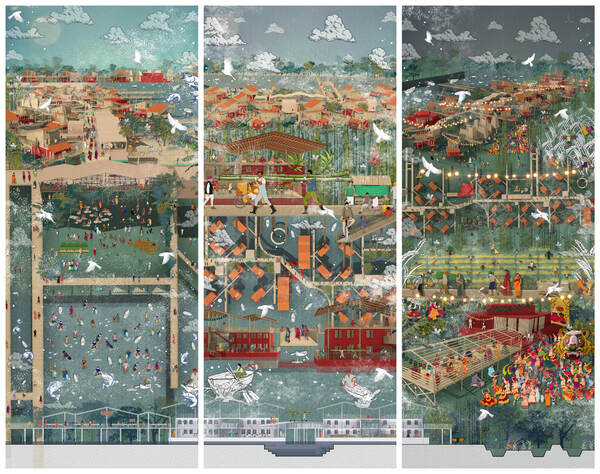Shilpogram: A Crafter's Village
The Shilpogram Village, situated in a flood-risk location in Zakiganj, Bangladesh, is an equitable social-study driven proposal, focused on the re-integration and agency of marginalised Bangladeshi villagers (particularly women and children). The proposal expresses spaces as a catalyst for interactions and local materials, crafting and construction techniques to re-design the built forms.
The drawings follow fishermen, craftspeople and farmers, illustrating; how Bangladeshis can adapt their life as sea levels rises. Understanding villagers’ everyday practices through a social sciences lens and in-person fieldwork in communities around Zakiganj, the proposal re-imagines mundane spaces of cultivating, fishing, crafting, education and gathering as an equitable means of livelihood and community living.
The Shilpogram Village focuses on the local, traditional craftsmanship of jute and bamboo, becoming a central material within the proposition - building upon “low-tek” methodologies. Considering, the climate crises placing areas of Bangladesh, including Zakiganj, at high-risk of flooding and displacement, the village utilises walkways, and elevated interventions to provide the community with a resilient and adaptable way of life. In addition to this, the design approach allows for future expansions, further supporting the adaptive living typologies within the proposition. In understanding the local vernacular, my proposal sought to create buildings which are culturally sensitive, contextually aware, environmentally sustainable and resonate with inhabitants.


